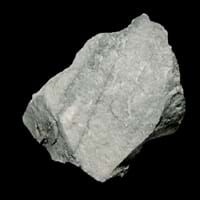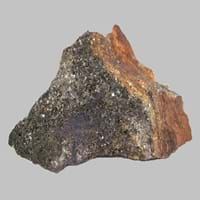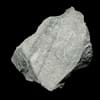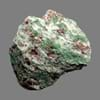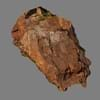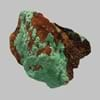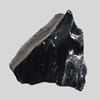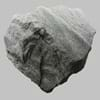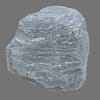Definition
Quartzite is a non-foliated metamorphic rock that forms by the metamorphism of pure quartz Sandstone
Hornfels is a metamorphic rock formed by the contact between mudstone or other clay rich rock, and a hot igneous body, and represents a heat altered equivalent of the original rock
Origin
Unknown
New Zealand
Discoverer
Unknown
Unknown
Etymology
From quartz + -ite
From German which means hornstone
Class
Metamorphic Rocks
Metamorphic Rocks
Sub-Class
Durable Rock, Hard Rock
Durable Rock, Soft Rock
Group
Not Applicable
Not Applicable
Other Categories
Medium Grained Rock, Opaque Rock
Fine Grained Rock, Opaque Rock
Texture
Foliated, Granular
Granular, Platy
Color
Black, Blue, Brown, Green, Light Grey, Purple, White, Yellow
Brown, Dark Greenish - Grey, Green, Reddish Brown
Durability
Durable
Durable
Interior Uses
Countertops, Decorative Aggregates, Flooring, Homes
Decorative Aggregates, Flooring, Homes, Interior Decoration
Exterior Uses
As Building Stone, As Facing Stone, Garden Decoration, Paving Stone
As Building Stone, As Facing Stone, Garden Decoration, Office Buildings, Paving Stone
Other Architectural Uses
Curbing
Curbing
Construction Industry
Arrowheads, As Dimension Stone, Cement Manufacture, Construction Aggregate, Cutting Tool, for Road Aggregate, Making natural cement, Production of Glass and Ceramics, Rail Track Ballast, Roadstone
for Road Aggregate, Roadstone
Medical Industry
Not Yet Used
Not Yet Used
Antiquity Uses
Artifacts, Jewellery, Monuments, Sculpture
Artifacts, Monuments
Commercial Uses
An Oil and Gas Reservoir, As armour rock for sea walls, Cemetery Markers, Commemorative Tablets, In aquifers, Laboratory bench tops, Petroleum reservoirs, Soil Conditioner, Source of Magnesia (MgO), Tombstones, Used in aquariums
Cemetery Markers, Commemorative Tablets, Creating Artwork
Types
Not Available
Biotite hornfels
Features
Generally rough to touch, Is one of the oldest rock
Smooth to touch
Archaeological Significance
Famous Monuments
Data Not Available
Data Not Available
Sculpture
Used
Not Yet Used
Famous Sculptures
Data Not Available
Not Applicable
Pictographs
Not Used
Used
Petroglyphs
Not Used
Used
Figurines
Used
Not Yet Used
Formation
Quartzite forms from sandstone and the mineral quartz being put under extreme heat and pressure.
Due to change in environmental conditions, rocks are heated and pressurized deep inside the Earth's surface. Hornfels is formed from the extreme heat caused by magma or by the intense collisions and friction of tectonic plates.
Mineral Content
Chlorite, Epidote, Hematite, Kyanite, Magnetite, Muscovite or Illite, Quartz
Andalusite
Compound Content
Aluminium Oxide, CaO, Iron(III) Oxide, MgO, Sodium Oxide, Silicon Dioxide
Fe, Mg
Types of Metamorphism
Burial Metamorphism, Cataclastic Metamorphism, Hydrothermal Metamorphism, Regional Metamorphism
Not Applicable
Types of Weathering
Biological Weathering, Chemical Weathering, Mechanical Weathering
Biological Weathering
Types of Erosion
Chemical Erosion, Coastal Erosion, Water Erosion, Wind Erosion
Chemical Erosion, Glacier Erosion, Sea Erosion, Water Erosion, Wind Erosion
Grain Size
Medium Grained
Fine Grained
Fracture
Uneven, Splintery or Conchoidal
Conchoidal
Porosity
Less Porous
Highly Porous
Cleavage
Indiscernible
Perfect
Toughness
1.9
Not Yet Found
Specific Gravity
2.6-2.8
3.4-3.9
Transparency
Transparent to Translucent
Opaque
Density
2.32-2.42 g/cm3
0.25-0.30 g/cm3
Resistance
Heat Resistant, Impact Resistant, Pressure Resistant, Wear Resistant
Heat Resistant, Impact Resistant, Pressure Resistant
Deposits in Eastern Continents
Asia
China, India, Israel, Russia, South Korea, Thailand, Turkey
Bangladesh, Bhutan, China, India, North Korea, Qatar, Russia, Saudi Arabia, South Korea, Thailand
Africa
Ethiopia, Morocco, South Africa, Zimbabwe
Cameroon, East Africa, Tanzania, Western Africa
Europe
England, Italy, Norway, Scotland, Sweden, United Kingdom
United Kingdom
Others
Greenland
Not Yet Found
Deposits in Western Continents
North America
Bahamas, Canada, USA
Canada, USA
South America
Brazil, Colombia, Venezuela
Bolivia, Brazil, Colombia, Ecuador
Deposits in Oceania Continent
Australia
New Zealand, Queensland, Western Australia
New South Wales, New Zealand, Queensland, Western Australia
All about Quartzite and Hornfels Properties
Know all about Quartzite and Hornfels properties here. All properties of rocks are important as they define the type of rock and its application. Quartzite and Hornfels belong to Metamorphic Rocks.Texture of Quartzite is Foliated, Granular whereas that of Hornfels is Granular, Platy. Quartzite appears Lustrous and Hornfels appears Dull. The luster of Quartzite is vitreous while that of Hornfels is shiny. Quartzite is available in black, blue, brown, green, light grey, purple, white, yellow colors whereas Hornfels is available in brown, dark greenish - grey, green, reddish brown colors. The commercial uses of Quartzite are an oil and gas reservoir, as armour rock for sea walls, cemetery markers, commemorative tablets, in aquifers, laboratory bench tops, petroleum reservoirs, soil conditioner, source of magnesia (mgo), tombstones, used in aquariums and that of Hornfels are cemetery markers, commemorative tablets, creating artwork.
